Epson EH-TW5500 LCD Projector Review
Epson EH-TW5500 LCD Projector
Epson pretty much rewrites the LCD projection rule book for the second time in three months with its EH-TW5500.
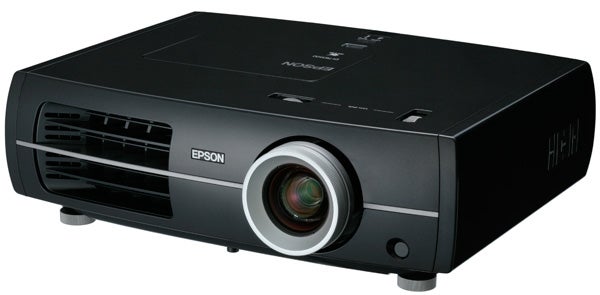
Verdict
Key Specifications
- Review Price: £3899.00
If you’re one of the growing number of people no longer finding their home cinema/gaming obsessions satisfied by a TV, you’ve got a rather exciting three months ahead. For the run up to Christmas is set to herald the release of an unprecedented rush of projectors, with just about every projector brand of note – Sony, JVC, BenQ, Optoma, Panasonic, InFocus and Epson – unleashing key new home cinema machines.
First out of the traps, though, is Epson. And following the resounding success of its flagship TW5800 model, reviewed back in June, it’s getting its big guns out right away, in the shape of new flagship model, the £3,899 EH-TW5500.
The first thing that has to be said about the TW5500, inevitably, is that its £3,899 price tag is pretty formidable. But as we’re about to discover, as well as shipping with a five-year projector and lamp warranty (including Saturday service), the TW5500 has more than enough going on under its bonnet to make such a price seem fair.
Regular readers might be a bit surprised about this, given that the ‘TW5500’ model number reads lower than the TW5800 figure used on Epson’s previous flagship model. After all, lower model numbers usually imply some kind of inferiority versus higher-numbered models. But trust us: the TW5500 really is a major leap forward over the already seriously impressive TW5800.
The improvements start right away with the TW5500 eschewing the high gloss finish of the TW5800 in favour of a new matt black body that doesn’t reflect light and so is much less likely to distract in a darkened room – especially if the projector is sited in front of your viewing position.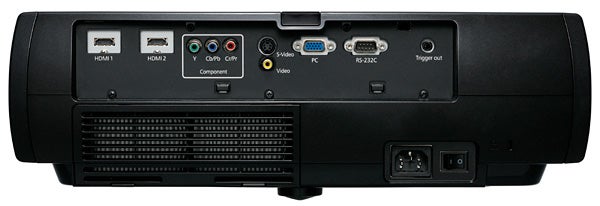
The TW5500’s connections are in line with what we’d expect of a premium projector these days. Which is to say you get highlights of two x.v.Colour-compatible HDMIs, a component video input, and an RGB PC input.
Considering how sophisticated the TW5500 will turn out to be, it’s remarkably easy to set up. An excellent 2.1 optical zoom joins forces with extensive vertical and horizontal image shifting to make getting an image perfectly positioned on your screen a mere minute’s work. There are two wind down legs under the projector’s front edge, too, though with so much optical image shifting available, it’s hard to imagine that you’ll need to use them.
The TW5500’s onscreen menus continue the friendly feeling, with clear presentation and a generally logical layout. The only thing that might possibly cause a little confusion is the decision to separate out Picture and Signal settings, with the signal mode including such options as 4:4 pulldown, overscan on/off and various levels of frame interpolation. Once you’ve got your head round Epson’s thinking, though, it all kind of makes sense, and doesn’t hold you up too much.
If you’re paying attention, you’ll have noticed that I said frame interpolation back there. For despite causing a few concerns over processing-related side effects on the TW5800, and generally being rather unloved on principle by some movie enthusiasts, frame interpolation is back on the TW5500. Before anyone gets all huffy about it, though, I strongly suggest that you reserve judgement until you’ve read the performance section of this review, since the TW5500’s frame interpolation is certainly not a mere re-run of the system found on the TW5800.
Other quoted specifications of the TW5500 include some seriously eye-catching stuff. The projector enjoys a Full HD resolution, for instance, and a promisingly high colour light output of 1,600 Lumens.
If you’re wondering why we said ‘colour light output’ (CLO) rather than simply ‘light output’ or brightness, it’s a distinction Epson – and Sony, actually – is keen to make with their new projector ranges. The point being that rather than the usual luminance figure, which is based on the reproduction of white, CLO is a metric measure of a video projector’s ability to deliver colours. And it just so happens that LCD technology tends to deliver rather brighter colours than arch-rival technology, DLP.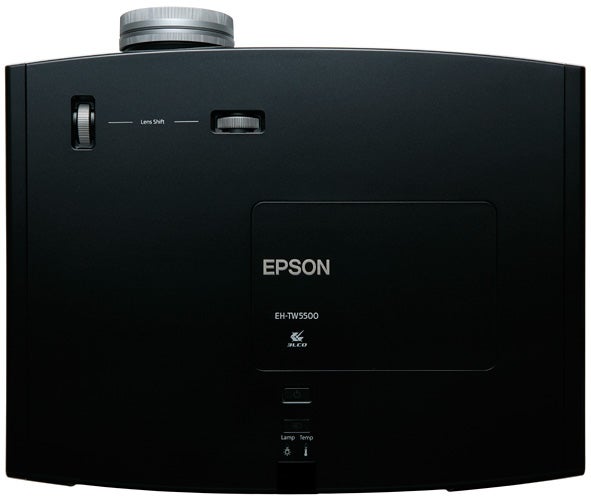
Arguably the single most exciting specification of the TW5500, though, is its claimed contrast ratio of 200,000:1. Even taking into account the usual tendency for manufacturers to be ‘optimistic’ with contrast ratio figures, 200,000:1 reads simply miles ahead of anything I’ve seen quoted on an LCD projector before. Even the impressive black levels of the TW5800 were only accompanied by a 75,000:1 claimed contrast ratio.
Although the TW5500’s claimed contrast boost comes in part from improvements to the efficiency of the projector’s light path (via Epson’s latest DeepBlack technology), it also owes much to Epson’s development of a new dual-layer, notched iris.
To explain this as simply as possible, having an iris comprising two distinct layers reduces the light output from the projector progressively, in two quickly consecutive stages, rather than just one, which allows the TW5500’s dynamic iris system to deliver pronounced shifts in image brightness – and thus a greater contrast range – without causing the brightness ‘jumps’ that usually occur when a projector tries to deliver quick and dramatic brightness shifts.
Other bits and bobs of note include HQV video processing to boost image clarity and motion sharpness, 12-bit video processing, an anamorphic wide mode (for use with third-party anamorphic lenses), ISF calibration menus, and a cable cover to keep things looking tidy even if you’ve got the projector mounted on the ceiling.
So can all the improvements Epson has brought to the TW5500 really be seen onscreen? Indeed they can.
Since it was such a divisive element of the TW5800, I think a good place to start would be by covering the massive improvement Epson has delivered to its frame interpolation processing.
The trick with the new system is, effectively, that it’s become cleverer at recognising its own limitations. And so whereas the earlier frame interpolation engine tended to break down into obvious glitching and flickering when the amount of motion it was required to deal with became too great for it to handle, the latest system deactivates the frame interpolation processing automatically at times of extreme duress, reverting to a less processing-heavy, artefact-free pull-down arrangement.
With the TW5800, I personally found the Frame Interpolation system borderline unusable on anything other than its Low setting – a setting which wasn’t really powerful enough to reduce judder all that much. With the TW5800, though, the more powerful Normal frame interpolation mode massively reduces judder in the image while, crucially, generating hardly any distracting processing side effects.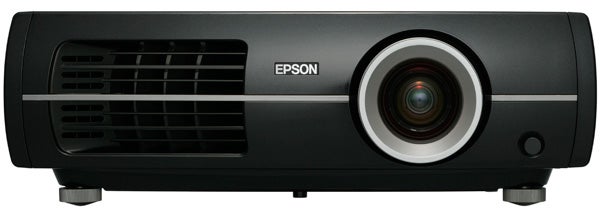
The scene where Bond arrives in the Bahamas in ”Casino Royale” is a severe test of any motion compensation system, with its rapid tracking shots of cars and boats, and objects within the frame moving at a different rate to the camera pan. Yet where the TW5800 showed clear signs of glitching and shimmering haloes around moving objects with these shots using its normal or high frame interpolation settings, the TW5500 is pretty much rock solid.
The TW5500’s more adaptive approach means there’s perhaps a touch more judder in, say, the portrayal of the beach huts behind Bond’s Ford Focus as it flies towards his swanky hotel. But personally I’d trade a fraction more judder during really fast camera pans over aggressive processing artefacts any day.
When all’s said and done, the TW5500’s frame interpolation system is arguably the first such technology I’ve seen on a projector that significantly improves the clarity and fluidity of the picture without causing artefacts more distracting than the judder it’s designed to remove.
In fact, I’m confident that even some of those die-hard purists who argue that judder is part of the cinematic experience and should be left alone might find themselves ‘turned’ by the TW5500’s frame interpolation efforts. Which is about as high a recommendation I can give, considering what an inherently stubborn bunch such dyed-in-the-wool purists invariably are!
If you’re STILL not convinced that Frame Interpolation has any place in your movie-loving world, though, please note that the TW5500 allows you to deactivate all of its Frame Interpolation processing completely if you so desire.
The other area where the TW5500 delivers a truly significant improvement over the TW5800 is black level response. This comes as a surprise given that the TW5800 itself set new black level standards for the LCD projection market. But honestly, the really quite revolutionary double iris arrangement takes things to a whole new level, producing black levels so rich and deep that they even give JVC’s D-ILA models a run for their money. And you can’t say fairer than that.
With the dynamic iris system engaged, it would be scientifically impossible for Epson to produce such dazzling black levels on the TW5500 without some loss of brightness and, thus, a little bit of black ‘crush’. But while this may still give JVC’s upcoming – and more expensive – new D-ILA models an edge when it comes to portraying dark scenes, the amount of dynamism and even greyscale/shadow detail information retained by the TW5500, despite the depth of its blacks, is actually still extremely impressive. 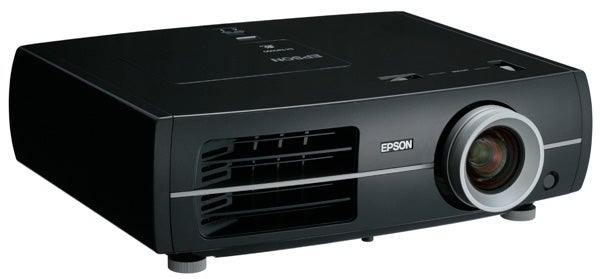
The improvements wrought to the TW5500’s optical engine in pursuit of better black levels – as well as an improved Cinema Filter – seem to have boosted its colour reproduction, too. Colours look richer, more expressive and even more natural than they did on the TW5800, ensuring that films and games alike look so solid, rich and real that you feel like you could just step right into the fictional worlds being shown.
Facial close-ups, in particular, prove just how much effort has gone into fine-tuning the TW5500’s colour palette – as well as highlighting how subtle the projector is when it comes to portraying colour blends and tonal shifts.
Another thing I personally love about the TW5500 is the way it doesn’t try to shoe-horn you into watching colours – or other aspects of the image, come to that – the way that other people think you should watch them. For while the projector obviously caters – extremely well – for the usual industry colour standards, reflected in some of the best-calibrated preset modes around, it also bravely offers presets which clearly emphasise, for instance, intense colour saturations or warm colour temperatures over absolute colour accuracy – just in case any of its customers prefer that. And for me, providing the flexibility to cater for the potentially diverse personal tastes of paying punters is far more important than merely slavishly obsessing over ‘industry standards’.
Wrapping up an HD video performance that honestly justifies the TW5500’s price tag is some effortless sharpness. Fine details are abundant and clear, and the filmic grain retained in some Blu-ray transfers appears on screen with just the right level of emphasis. In other words, it’s there as a natural result of the projector’s inherent sharpness, rather than being ‘forced’ by any over-enthusiastic sharpness processing.
Not that the TW5500 is afraid of sharpness processing, mind you. For a new Super Resolution mode aimed at sharpening up standard def sources works quite aggressively on DVDs and Freeview broadcasts, to give them a much grittier look.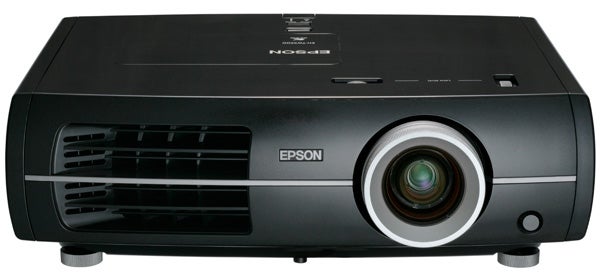
Personally I found that the processing caused a little edge ghosting, and sometimes made sharpness levels across the picture look a touch uneven. But doubtless some folk will really like the feature. And anyway, even if you leave it switched off, the TW5500 is a perfectly respectable standard def performer.
One final bit of good news about the TW5500 is how quietly it runs. Using the low-power Eco mode, in fact, the projector is practically inaudible, even during near-silent film scenes. Personally, though, I preferred the more vibrant, punchy image produced using the Normal Power Consumption mode, so it was a relief to find that this only introduced a little more noise – certainly nothing that’s likely to distract you during a normal movie, even if the projector is positioned fairly close to your sitting position.
”’Verdict”’
With so many projectors vying for your attention in the coming months, it’s inevitable that there will be winners and losers along the way. But by pretty much rewriting the LCD projection rule book for the second time in three months, it’s hard to imagine Epson ending up anywhere near the losers camp with the EH-TW5500. Especially since its arrival slightly ahead of its rivals has set the bar so dizzyingly high.
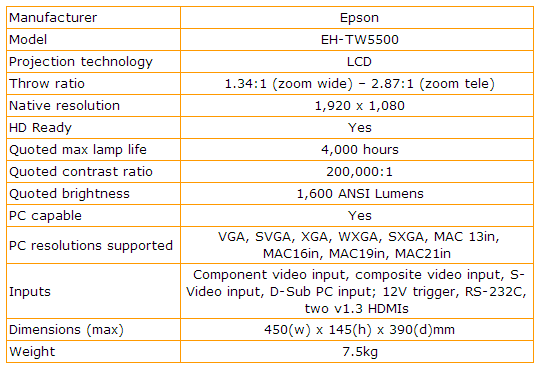
Trusted Score
Score in detail
-
Value 8
-
Features 9
-
Image Quality 9
-
Design 7

